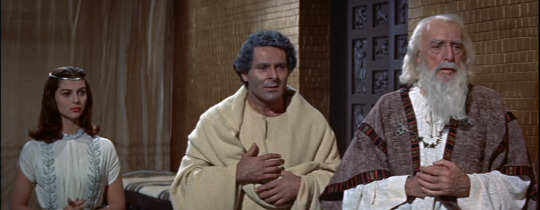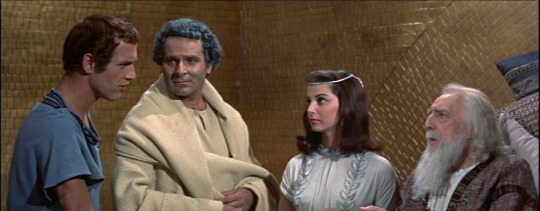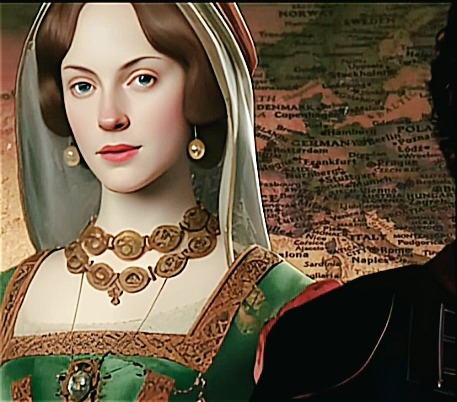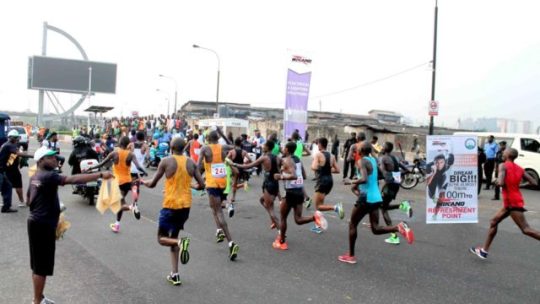#thomas costain
Text
I just finished The Black Rose, a 1945 historical fiction novel (though I’m using the term somewhat loosely) written by Thomas Costain. GRRM has openly described his fondness for Costain (1, 2, 3, 4, 5) - not the least example of which is in his creation of House Costayne, whose sigil references both this novel and another, The Silver Chalice - and I thought it would be fun to read more GRRM inspiration books in the new year (although that’s not a demand for anyone to stop asking me about The Accursed Kings and ASOIAF, of course). As a story set in the 13th century across both England and the Mongol Empire, starring a young aristocratic would-be knight, this novel seemed like much more obvious grounds for comparison to ASOIAF than, say, The Silver Chalice (a Holy Grail origin story set in first-century Judea) or one of Costain’s (ostensibly) nonfiction Plantagenet histories, like The Conquering Family. (You might say I should have started with GRRM’s own Costain favorite, The Moneyman, but I didn’t, oh well.)
Now, do I think The Black Rose is on the same level as, well, The Accursed Kings in terms of specific influence on ASOIAF? Probably not. While there were definitely elements to this book that I could reasonably believe were in GRRM’s mind while he was writing ASOIAF, these parallels remained largely surface-level, and in some ways indistinguishable from familiar tropes of romanticized medievalism.
For one, the novel’s hero, Walter of Gurnie, is a little bit of a Jon Snow figure. Like Jon, he is an aristocratic bastard openly recognized by his father (ostensible father, in Jon’s case), and perhaps like Jon, his (biological) father and mother had some secret pledge to marry prior to his birth (though unlike Jon, Walter’s father broke that pledge to marry another woman, the daughter of the Norman family that paid his Crusader ransom). The “Saxon” ancestry of Walter, derived from his mother’s family, compared to the “Norman” ancestry of his father, may likewise parallel the First Men ancestry of the Starks, and specifically Lyanna, versus the Valyrian ancestry of the Targaryens who had conquered Westeros in the same fashion as the Norman William the Conqueror. Too, each bastard son physically closely resembles his father (or, again, ostensible father for Jon): Walter shares the blue eyes, blond curling hair, and “Norman” nose of Earl Rauf, much as Jon shared the long face, dark hair, and gray eyes of the Starks. As with Jon, there is no love lost between the bastard son and his father’s wife, with “the Norman woman” (othered by her foreignness, very loosely akin to Catelyn and her southron origins) denouncing Walter as a “Saxon cur” (though the dowager Countess of Lessford is a tyrannical and openly villainous woman, in all other respects totally different from Catelyn). This is about where any real, even if minor, parallels to Jon end, to the extent they existed in the first place, but they’re worth noting as possible ideas for GRRM when the latter was first dreaming up Jon.
Additionally, Walter’s love interest, Maryam, has her share of parallels to Daenerys, though I think this comparison is even more limited than that between Walter and Jon. Maryam enters the story as the beautiful teenage sister (or, rather, ostensible half-sister) of the rich and thoroughly unlikeable Greek merchant Anthemus, who wishes to sell Maryam to Kublai Khan to be part of his harem - a plot point recalling Viserys’ willingness to sell his sister to Khal Drogo, into a position not too dissimilar from what Costain envisions for Kublai Khan’s harem slaves. It is worth noting, in exploring this parallels, that Maryam is revealed to be the biological daughter not of her and Anthemus’ Greek father Alexander, but of an English soldier-turned-slave in Alexander’s household, insofar as this ancestry marks Maryam (in the opinion of herself and the two main protagonists, at least) as “English” rather than foreign (much as Daenerys, though raised almost entirely in Essos, is still Westerosi in her birth and (recent, for the Targaryens) ancestry). Indeed, Maryam and Walter’s pseudo-familial connection - Walter believes that Maryam’s biological father was his own father’s faithful squire, captured during the Crusades - may link them to Jon and Daenerys, themselves related much more directly by their shared Targaryen bloodline. Again, these comparisons are pretty thin - Maryam certainly never comes into power in her own right as Daenerys does, and most of the novel consists of her either being rescued and/or protected and hidden by Walter or her attempting to reunite with him after being separated in China - but there may have been some limited inspiration here.
There are, moreover, some other minor points of potential inspiration in the novel. Costain’s version of the medieval Oxford University, where Walter begins the novel as a student, might have resonated in GRRM’s mind when the latter was creating the Citadel (especially the divisions of learning among the students - Walter’s program of study focuses on languages, for example, while his comrade and secondary protagonist Tristram Gruffen studies math and science with Roger Bacon), though Costain hardly invented either Oxford University itself or the general idea of a medieval institution of learning. Bacon himself might have figured, or will go on to figure, into GRRM’s development of Archmaester Marwyn - an intelligent but controversial scholar, rumored to dabble in magic, fascinated with the technological innovations and learning of the east - although again, the smart, unorthodox teacher who Doesn’t Play By The Rules TM is not a trope unique to either Costain or GRRM. Overall, I think, this novel belongs to that same class of what I’ll call midcentury medievalism that seems to have had quite the impact on GRRM, without necessarily being foremost in the author’s mind.
(Also, a friendly word of warning for anyone else who wants to delve into The Black Rose. If you thought ASOIAF occasionally falls into bad old orientalist tropes - and it does, no question - these tropes are magnified to the eleventh degree in The Black Rose. Maryam, for example, is initially introduced by Costain as having “skin of a slightly olive tint”, but consistently thereafter is referred to, and indeed defended as, “white” or “English”, specifically to negatively charged accusations of being “Greek” or “dusky”. The cruelty and barbarism depicted as normal for Mongol warriors make GRRM’s descriptions of the Dothraki appear subtle and nuanced by comparison: Costain spends several paragraphs in one chapter detailing the gruesome Crusade souvenirs carried by Mongolians (including “skin (flayed, presumably, from the hides of Western soldiers) … as saddle-cloths” and “a human skull … which had been converted into a drinking cup”) and the child-murdering game supposedly practiced by Mongolian riders, ending with the conclusion by the main character that “[t]hese Mongols are not human — [sic] not as we understand human nature”. Even Costain’s attempts to portray one (real-life) Mongol, Bayan of the Hundred Eyes, in a relatively more positive light reflect the author’s general antagonism toward the Mongolians: Bayan is distinguished initially by Walter because his “eyes … lacked the cruel slant at the corners” and were instead “full and large … and warmly brown, glowing with a pleasant intelligence”, while Walter later informs Maryam (convinced that Bayan “must be as cruel as all the other Mongol leaders”) that Bayan “has been criticized for his leniency many times”. What’s more, when Bayan confronts Walter on the seeming hypocrisy of the Christian crusaders, who profess monogamous love while raping women in their campaigns, Walter never actually provides a defense; Walter’s later criticisms of the English feudal structure do not extend to either a repudiation of the sexual crimes associated with Western chivalry or a reconsideration of Mongolian society as anything other than terrifying and brutal.)
53 notes
·
View notes
Link
Added to the Vintage shop!
~ “The Mississippi Bubble” by Thomas B. Costain (1955) Landmark Books
#The Mississippi Bubble#Thomas B Costain#Thomas Costain#Landmark books#vintage books#Vintage children's books#VintageCDChyld#Vintage#Etsy
0 notes
Text










The Silver Chalice (1954)
#the silver chalice#paul newman#virginia mayo#pier angeli#natalie wood#jack palance#thomas b. costain#debut of paul newman#first movie of paul newman#basil#ancient rome#nero#first christians#christian community#christian message#classic hollywood#classic cinema#50s cinema
8 notes
·
View notes
Text
Books with “C” Authors I Own and and Need to Read Part 6



*need to get book 1 ^_^’









#Books#booklr#authors#tbr shelf shaming#Susan Cooper#Alfred Coppel#James A. Corey#Elle Cosimano#Thomas B. Costain#Leonard Cottrell#Bruce Coville#Sharon Creech#Andrea Cremer#Alison Croggon
1 note
·
View note
Text
Must we reiterate that Fire & Blood is the account of what occurred during the Dance of the Dragons from two awfully different perspectives, NOT what truly happened. It is up to the interpretation of the reader and thus, the show runners, to change who, what, where, why, and how. That is the beauty of Fire & Blood. That is how GRRM wanted it to be.
Written by GRRM himself, April 25 2018.
"I do want to stress… indeed, I want to shout… that FIRE & BLOOD is not a novel. This is not a traditional narrative and was never intended to be. Some of my fans have objected to the term “fake history” that I’ve bandied about in past blog posts and announcements in reference to “The Princess and the Queen” and “Sons of the Dragon” and the like. Very well; let’s call this one “imaginary history” instead. The essential point being the “history” part. I love reading popular histories myself, and that’s what I was aiming for here. Not historical fiction, not fantasy, no… but something more akin to Thomas B. Costain’s monumental (and wonderfully entertaining) four-volume history of the Plantagenets. (But with dragons. Did I mention the dragons?)
So: not a novel. Everyone clear on that?"
#house of the dragon#hotd#hotd season 2#hotd season two#hotd season one#hotd season finale#hotd season 1#tom glynn carney#ewan mitchell#rhaenyra targaryen#alicent hightower#emma d'arcy#olivia cooke#helaena targaryen#phia saban#paddy considine#viserys targaryen#fire and blood#a song of ice and fire#asoiaf
103 notes
·
View notes
Text
GRRM has mentioned both The Black Rose by Thomas Costain and the Memory, Sorrow and Thorn books by Tad Williams as books he took inspiration from.
And it's therefore striking that the Black Rose has a female character called Maryam who escapes a harem and travels disguised as a serving boy while falling in love with the male protagonist who is an illegitmate son of a saxon lord.
While Memory, Sorrow and Thorn's lead female protagonist is called Marya who disguises herself as a boy, fights with a bow and travels with a wolf. She too falls in love with a low born orphan, Simon Snowlock, who has a secret claim to the Dragonbone chair.
85 notes
·
View notes
Text
My favourite part about the narrative around Matilda that GRRM chose to base Rhaenyra's on, is how she bided her time until Stephen's administrative mismanagement turned enough sentiment against him, and basically crossed to England shouting, "I'm really good at administration!"
Anyways, that's why you'll never convince me of those headcanons that aren't even really supported in Fire and Blood that Rhaenyra was incompetent or unprepared to assume normal Crown duties.
Also:

From the same volume that writes about her "imperious temper" plunging the nation into war:

-

-

-

But back to my favourite part:





THOMAS B. COSTAIN: PLANTAGENETS — THE PAGEANT OF ENGLAND (Vol. 1)

He didn't lie.
#asoiaf#hotd#hotd critical#fire and blood#team black#house of the dragon#asoiaf fandom#hotd sexism#rhaenyra targaryen
52 notes
·
View notes
Note
Hi! I was looking some of your old stuff and, in some, you mentioned writers and series that influenced Martin in creating some places in the World of Ice and Fire. I remember you mentioning some specific Conan stories to understand Yeen; Edgar Rice Burroughs for Bayasabhar, Samyriana and Kayakayanaya; Elric of Melniboné for Valyria; and Lovecraft, Lost World, Edgar Rice Burroughs and Heart of Darkness for Sothoryos.
I was wandering if there is any other influence that you caught and if you could tell us which one they are.
In addition to those, as @goodqueenaly has pointed out there's a ton of Maurice Druon and some Thomas Costaine and some Robert Graves.
23 notes
·
View notes
Text


The triangle Constance of Castile, John of Gaunt and Katherine Swynford
Part One
Katherine Swynford and John of Gaunt met whilst she was in the service of his first Duchess, Blanche, as a chamber servant. During this time, the two women were on close terms, for Katherine’s own daughter, Blanche Swynford, was placed in the same chamber as both Philippa and Elizabeth – the daughters of Blanche of Lancaster – and Gaunt was appointed as her godfather. Katherine was married to one of Gaunt’s retainers, Sir Hugh Swynford, who held a manor in Kettlethorpe in Lincolnshire. Hugh Swynford suddenly died, whilst serving John of Gaunt in Aquitaine. He left Kettlethorpe in the possession of Katherine and his son and heir Thomas, who was four years old. Hugh Swynford’s land and house were part of the Duchy of Lancaster, and as his Lord, John of Gaunt dutifully ensured the welfare of his family. He employed Katherine in his household as a ‘maistresse’ – a governess – to his daughters, and appointed her sister Philippa, the wife of Geoffrey Chaucer, to serve Duchess Constance.

In spring 1372, shortly after John of Gaunt paraded Constance through London, he gifted Katherine a generous sum of money. This is the first record of his direct association with her, and it is likely that around this time she became his mistress. Katherine’s conveyance of the news of Princess Catalina’s birth to the King suggests that she had been in attendance; having borne at least four children of her own at a young age, she would have been able to reassure and support Constance through her ordeal. But as soon as her own pregnancy became obvious, a pregnancy that could not have been her husband’s doing, she would have been obliged to resign her post and return to Kettlethorpe.

In 1373, the first son of the lovers couple, John, was born and given the surname Beaufort. Following his birth, John of Gaunt granted Katherine more money as well as a lucrative marriage agreement for her daughter Blanche. John Beaufort’s early years were probably spent at Kettlethorpe. The pattern of John’s grants to Katherine, some of them concerning its refurbishment, some of them handsome gifts, may indicate the dates of birth of their other children, and certainly suggests that the manor was being made a fit place for them to be brought up in. Kettlethorpe was a remote village with a tiny population, an ideal setting for discreet confinements and the raising of royal bastards whose existence was better kept secret – at least for the present.

Certainly the lovers were discreet, at least to begin with – had they not been, the world would soon have known of their affair, and we would not have to rely on inference and speculation in determining the circumstances in which it began. Costain argues that it was Katherine who insisted on secrecy in the early years of the liaison – she was, after all, newly widowed – but there were political imperatives to be considered too: John would not have wished to openly dishonour his new wife when all his hopes were centred on claiming the crown of Castile in her right. Thus the need for discretion was probably mutual, and it ensured that for some years to come, his affair with Katherine was conducted in secrecy and with great circumspection.
Sadly for those romantics who would prefer to believe that the Duke stayed true to Katherine within the limits of their adulterous relationship, there is some evidence that he had fleeting sexual encounters with other women during the course of it. In 1381, he was publicly to confess that he had committed the sin of lechery with Katherine herself ‘and many others in his wife’s household’. Probably John’s amours were fleeting and purely physical – and made no impact on his obviously deep feelings for Katherine Swynford.

Yet it appears that the Duchess’s Castilian ladies were already aware in 1373 that Katherine was John’s mistress. Their gossiping so annoyed the Duke that he packed them all off to Nuneaton Abbey, hoping that the Abbess would teach them discretion. If her ladies knew what was going on between the Duke and Katherine, the chances are that Constance did too.
By 1375 Katherine's position of influence with the Duke was becoming public knowledge. Although there are very few known instances of her exercising any powers of patronage, the Leicester records show that she occasionally used her influence for the benefit of others, while there is evidence to suggest that if she did ask favours from the Duke, it was usually for her own family members.
The public and liberal relationship that Gaunt and Katherine enjoyed after 1377 was due to Gaunt’s shift in position after the death of Edward III. He was the uncle of King Richard II, the most powerful noble in the country, a Prince, and even a King himself; he was powerful enough to conduct the affair without fearing the consequences. Katherine accompanied John of Gaunt that summer as he toured his extensive Duchy lands – the towns and villages where he was most at ease and felt confident in the love of the people. It was certainly at the request of John of Gaunt, within weeks of Richard’s ascension, that Katherine was granted two wealthy manor estates for life, in exchange for Gaunt’s county of Richmond. This generous gift – at the cost of his own property – is testament to Gaunt’s respect and love for Katherine Swynford in the late 1370s.
Sources:
Alison Weir, KATHERINE SWYNFORD: THE STORY OF JOHN OF GAUNT AND HIS SCANDALOUS DUCHESS
Helen Carr, THE RED PRINCE: THE LIFE OF JOHN OF GAUNT, THE DUKE OF LANCASTER
Images from youtube's video:
youtube
#constance of castile#john of gaunt#katherine swynford#constanza de castilla#constanza of castile#geofrey chaucer#richard ii#hugh swynford#john beaufort#english history#lancaster#Youtube
8 notes
·
View notes
Text

The Moneymaker by Thomas B. Costain ( Bantam, 1954)
8 notes
·
View notes
Text
I'm reading a book by thomas costain about the history of the plantagenets. first published 1949. and he's genuinely just out here saying things like 'there's no record of meeting at this time between the empress maud and her cousin and prisoner of war king stephen. but it certainly happened, and I reckon it would have gone like this.' no footnotes no endnotes no bibliography. pure storytelling and vibes. what a time to be a historian.
2 notes
·
View notes
Text
Having recently read Thomas Costain’s The Black Rose, I have now also finished another Costain historical fiction novel, The Moneyman. To (very) briefly summarize, The Moneyman is the story of a real-life figure, Jacques Cœur, a merchant raised to the nobility by King Charles VII of France and made the king’s chief finance minister and one of his closest advisors, only to be disgraced and exiled after a false accusation of murder is laid against him by that same king. As I mentioned in my last post, The Moneyman is supposedly GRRM’s favorite of Costain’s works, so I was very intrigued to see if GRRM would borrow any ideas or character models from The Moneyman for his Westerosi works.
Unfortunately, once again I find very little to parallel with ASOIAF. The titular Moneyman himself might be as rich as Littlefinger, but the charges of embezzlement falsely levied against Cœur would be all too accurate if laid at Littlefinger’s door. Indeed, Cœur's deep, honest, but not sycophantic loyalty to Charles VII - a willingness to tell the king the truth coupled with a desire to look out for the best interests of the kingdom - could not be more alien to Littlefinger, whose selfishness and dishonesty are central to his personality. (In fact, the closer parallel to the Moneyman might be someone like Enguerrand de Marigny of The Accursed Kings.) I suppose you could compare Cœur to say, Davos Seaworth - the honest common man raised to the nobility by a grateful king - but Cœur is, well, defined by his substantial personal fortune in a way Davos obviously is not (because he has none, of course), nor can Charles VII’s petty jealousy of Cœur's wealth (and his subsequent willingness to condemn his devoted servant on trumped-up charges) be compared to anything in the relationship between Davos and Stannis.
Now, is it possible that GRRM took a bit of inspiration from Cœur's trial at the end of the book for Tyrion’s trial at the end of ASOS? Maybe. Just as Tyrion was falsely accused of poisoning Joffrey, Coeur is falsely accused of poisoning Lady Agnes Sorel, the beloved mistress of King Charles. In both cases, the author makes very clear that the accused was not in fact guilty of the crime by setting the reader in the accuser’s point of view at the time of the supposed poisoning, while simultaneously using circumstantial and/or outright fabricated evidence to make the case against the accused seem that much more damning. (Nor, indeed, is an explanation lacking in either case: the author makes clear many times, through Cœur as well as other characters, that Agnes Sorel is too sickly to live long, while Littlefinger explains the Joffrey poisoning plot to Sansa in pretty plain terms after the Purple Wedding.) Just as Tyrion’s physical proximity to and post-murder handling of Joffrey’s wedding cup helped sell the testimonies to his guilt at his trial, so Coeur’s administration of medicine to the dying Agnes Sorel is used by the prosecution to portray Coeur as a fiendish poisoner. Too, much as Taena Merryweather falsely testified that she had seen Tyrion pour poison into Joffrey’s cup, followed by Shae's false testimony as to Tyrion and Sansa’s allegedly conspiracy, so on the stand at Cœur's trial Jeanne de Vendôme fabricates an elaborate story of poisoning which she supposedly witnessed firsthand. Additionally, just as Pycelle (correctly) reported that Tyrion had taken poisons from his stores in order to falsely suggest that Tyrion gave poison to Joffrey, so one witness at Coeur’s trial - a doctor whom Cœur privately derides as a “great windbag … pedantic and opinionated and yet at the same time servile to all forms of authority”, not too far off the mark from Pycelle himself - seizes on Cœur's real, though harmless, mercantile association with the East to falsely link Cœur to the “Eastern poison” which supposedly killed Agnes Sorel. Cœur also offers to confess to a crime he knows he did not commit, in order to save his alleged co-conspirator (though he later rescinds this proposal); somewhat similarly, Kevan offered, in vain, to have Tyrion confess in exchange for permanent exile at the Wall (an offer that I think was genuine on Tywin’s part).
Now, while Cœur is not allowed to offer any defense on his own part (much as Tyrion was not at his trial), Cœur, unlike Tyrion, actually gets exonerated for the poisoning allegation, thanks to the testimony of an honest doctor who identifies the flaws in the case against Cœur. (Though Cœur is convicted of what Costain asserts were equally ludicrous charges and forced into permanent exile.) Of course, Costain didn’t invent the idea of trumped-up charges and patently untrue accusations in a legal trial (and Costain himself clearly states in his introduction and epilogue that he has, so he believes, adhered as closely to the real history of Cœur's downfall as possible), so it’s not that I think GRRM is uniquely indebted to Costain for Tyrion’s trial. Rather, while I think both are borrowing the same old tropes for similar stories, I can also acknowledge that this specific usage of those tropes may have been part of the inspiration for GRRM.
15 notes
·
View notes
Text
Govt announces alternative routes for Lagos city Marathon

Lagos State government has issued a traffic advisory ahead of the yearly Access Bank Lagos City Marathon coming up tomorrow Saturday, 10th February, 2024 between 5.00am and 2.00pm.
The state government said the following routes will be temporarily unavailable to motorists during the marathon: Funsho Williams Avenue from Stadium, Surulere; Ikorodu Road to Anthony; Gbagada to Third Mainland Bridge; Third Mainland Bridge (Inbound and Outbound);Dolphin Road to Alfred Rewane Road; Falomo Roundabout to Bourdillon Road; Lekki Bridge to Freedom Way and Akin-Adesola to Ahmadu BelloWay.
The state government in a statement by the Commissioner for Transportation, Mr Oluwaseun Osiyemi said that the alternative routes available during the marathon are: Apongbon bridge inwards Eko bridge through Costain Roundabout, Iponri and Bode Thomas for a desired destination or utilize Eko Bridge through Costain Roundabout and Apapa Road to link Oyingbo/Jebba to access Herbert Macaulay for a desired destination.
Motorists can equally go through Victoria Island to link Independence Bridge and CMS bridge to access Apongbon inwards Ijora-Olopa to Iddo and Oyingbo to connect Herbert Macaulay Road to continue their journeys.
For motorists trying to navigate the Third Mainland Bridge;The 3rd Mainland Bridge will not be available to Motorists from 12.00 tonight till the end of the marathon.
Osiyemi further hinted that all outbound journeys from Ikorodu Road, Funsho Williams Avenue enroute Lagos Island are exempted from the diversion, adding that Officers of the Lagos State Traffic Management Authority will be deployed to the diversion points for seamless traffic flow and safety of Motorists.
The vommissioner however advised motorists who have no serious business along the marathon diversion routes to avoid the areas. He added that movement on the 3rd Mainland will return to status-quo immediately after the marathon is concluded.
1 note
·
View note
Text
LASG Announces Diversion At Ojuelegba For Repair Of Truck Barrier
The Lagos State Govt @followlasg
LASG ANNOUNCES TRAFFIC DIVERSION FOR REPAIR OF TRUCK BARRIER AT OJUELEGBA FLYOVER BRIDGE
In line with the plan to repair the truck barrier at Ojuelegba Flyover Bridge which was recently damaged again, the Lagos State Government has announced traffic diversion on the night of Monday, 2nd October, 2023 from 10.00 pm to 6.00 am.
Consequently, the following alternative routes will be available to Motorists during the diversion:
i. Motorists from Eko Bridge/Constain/Iponri inbound Ojuelegba/Alhaji Masha Road will be diverted to the service lane from Alaka via the National Stadium gate to link Barracks or Alhaji Masha Road to continue their journeys.
ii. Motorists from Eko Bridge via Costain and those from Apapa Road going through Iponri will make use of Iponri Estate road to link Bode Thomas via Adeniran Ogunsanya to Shitta Roundabout for their desired destinations.
Motorists are implored to be patient as the brief closure of the bridge is planned for nighttime as part of a traffic management strategy to avert further accidents and loss of lives.
Source: @followlasg
Read the full article
0 notes
Text
Efemérides literarias: 8 de mayo
Nacimientos
1605: Marcela de San Félix, poetista y monja española, hija de Lope de Vega (f. 1687).
1877: José María Salaverría, escritor español (f. 1940).
1885: Thomas B. Costain, periodista y escritor canadiense (f. 1965).
1895: Edmund Wilson, escritor y crítico estadounidense (f. 1972).
1912: George Woodcock, escritor y poeta canadiense (f. 1995).
1914: Romain Gary, escritor y…

View On WordPress
0 notes
Text
2023: LASTMA gives out traffic advisory ahead of APC presidential rally

The Lagos State Traffic Management Authority (LASTMA) has issued a traffic advisory to ease the pressure of traffic gridlock in the state ahead of the All Progressives Congress, APC, presidential campaign rally scheduled to hold on Tuesday.
The event is expected to hold at the Teslim Balogun Stadium, Surulere, with President Muhammadu Buhari expected to lead the APC PCC at the rally.
In a statement, on Sunday, the LASTMA General Manager, Bolaji Oreagba, said the APC presidential candidate, Asiwaju Bola Tinubu, party stalwarts, and supporters will also be present at the rally.
According to Oreagba, the APC leaders will travel from the local airport through Mobolaji Bank Anthony Way, Maryland; Ikorodu Road (Idi-Iroko, Anthony, Obanikoro, Onipanu, Fadeyi), Jibowu, Empire, Moshalashi, Ojuelegba, Barracks, arriving at the stadium.
Meanwhile, the traffic management agency provided alternative routes for affected commuters.
Read the LASTMA full statement here:
MOTHER OF ALL CAMPAIGNS IS HERE!!!
PLAN YOUR WAKA!!!
LAGOS STATE GOVERNMENT
MINISTRY OF TRANSPORTATION
TRAVEL ADVISORY
ALL PROGRESSIVES CONGRESS (APC) PRESIDENTIAL MEGA RALLY SLATED FOR TUESDAY, 21ST FEBRUARY, 2023 AT TESLIM BALOGUN STADIUM, SURULERE, LAGOS.
As a result of the above stated, there will be a procession of APC Presidential Candidate, Party Stalwarts, Party Faithful and Supporters from the Local Airport to Stadium through Mobolaji Bank Anthony WayMarylandIkorodu Road (Idi-Iroko, Anthony, Obanikoro, Onipanu, Fadeyi)Jibowu EmpireMoshalashiOjuelegbaBarracksStadium.
Hence, Motorists are advised to make use of the following alternative routes during the procession:
1. FROM LOCAL AIRPORT TO MARYLAND, USE:
Kodesoh Obafemi Awolowo WayKudirat Abiola Way (Old Oregun Road)Ojota Maryland and connect destination
2. FROM LOCAL AIRPORT TO KETU-MILE 12, USE:
KodesohObafemi Awolowo Way Secretariat Road-> Mobolaji Johnson Avenue (7-Up) Ojota InterchangeKetu and connect destination.
While the procession holds on the Main Carriage Way on Ikorodu Road, the Service Lane will be available for use by the Motorists without any hassle.
In addition, in order to reduce inconvenience and travel time before and during the procession/rally, Motorists can make use of the following:
IKORODU TO LAGOS /LAGOS-IBADAN EXPRESSWAY TO LAGOS/OSHODI, USE:
Old Toll GateAlapereOgudu Iyana OworoThird Mainland Bridge and connect destination
APAPA-OSHODI EXPRESSWAY TO LAGOS, USE:
OshodiBridgeAnthony BridgeGbagada Iyana OworoThird Mainland bridge to connect destination.
OJUELEGBA –SURULERE, USE:
Lawanson -Itire RoadOgunlanaDrive AkereleShittaRoundabout
(a) Adeniran OgunsayaBode Thomas
(b) MashaAdelabuCensus Babs AnimashaunBode Thomasor (DoyinEric MooreAbebe Village (Nigerian Breweries)Costain and connect destination
(c)Masha Kilo
COSTAIN SURULERE USE:
(a) CostainiponriIponri Estate Bode Thomas and connect destination
(b) CostainAbebe VillageEric MooreDoyinBode Thomas OR Babs Animashaun (Babs Animaghaun CensusAdelabu)—Masha) and connect destination.
In order to reduce inconvenience, travel time, and ensure safety and security of all road users, adequate security and law enforcement personnel will be deployed along the entire dedicated routes to the stadium and alternative roads.
So, we humbly seek the support and cooperation of all road users, and apologize for any inconvenience this may cause.
Signed:
Mr. Bolaji Oreagba,
General Manager, Lagos State Traffic Management Authority,
(LASTMA)
Read the full article
0 notes